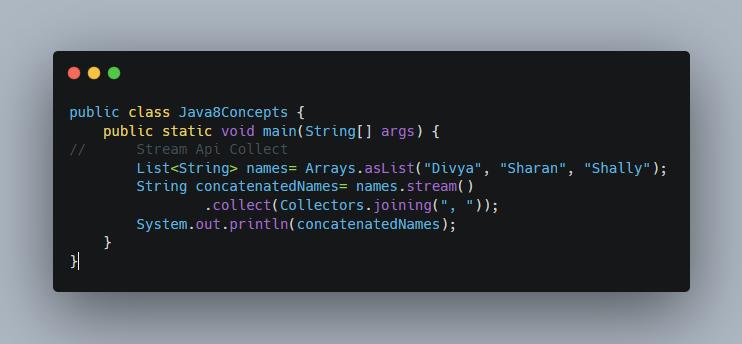Java 8, released in March 2014, marked a significant milestone in the evolution of the Java programming language. Pioneering a shift towards functional programming paradigms, Java 8 introduced a host of powerful features and enhancements that revolutionized the way developers write Java code. In this article, we delve into the groundbreaking updates of Java 8, exploring key features such as lambda expressions, streams API, and default methods in interfaces. Through this journey, we’ll uncover how these advancements have streamlined development workflows, empowered developers with concise and expressive syntax, and elevated Java’s capabilities to new heights. Join us as we unravel the Java 8 revolution and discover the transformative impact it has had on modern Java development.
Lambda Expression:
Lambda expression is a way to create an anonymous function, which can be thought of as a block of code that can be passed around, stored in variables, and executed later.
Lambda expressions are primarily used to implement functional interfaces, which are interfaces that contain exactly 1 abstract method. Lambda expressions provide a concise way to create instances of these functional interfaces.
So, when you write a lambda expression, you’re essentially defining the implementation of the abstract method of a functional interface. This allows you to pass behaviour as an argument to methods or store it in variables, making your code more flexible and expressive.
Example:

Functional Interfaces:
Functional interfaces are interfaces that contain only one abstract method. They are extensively used in lambda expressions and method references.
Example:

Default Methods in Interfaces
Default methods allow interface authors to add new methods to interfaces without breaking existing implementations. They provide a way to extend interfaces without requiring all implementing classes to implement the new methods.

Optional
Optional is a container object used to represent optional values. It helps in avoiding null pointer exceptions by indicating whether a value is present or absent.

Streams API
Streams provide a more functional approach to processing collections of objects. They allow you to perform operations such as filter, map, reduce, and collect on collections with concise and readable syntax.
Filter Count example:

Filter Collect Example:

Map Example:

Reduce Example:

Collect Example:
